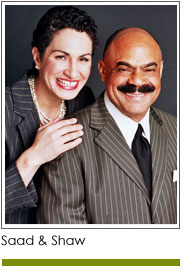 When people read about your organization there are two things that get their attention: emotions and numbers. A lot of focus has been placed on “telling your story” and we believe that is important. But the story has to include the facts about your nonprofit, its vision, impact, and finances along with an emotional hook that lets people resonate with the “why” of your organization.
When people read about your organization there are two things that get their attention: emotions and numbers. A lot of focus has been placed on “telling your story” and we believe that is important. But the story has to include the facts about your nonprofit, its vision, impact, and finances along with an emotional hook that lets people resonate with the “why” of your organization.
Over the years we have talked with large numbers of people, one-on-one, about how they respond to the ways in which nonprofit organizations and institutions of higher education tell their story.
When presented with information about an organization (a brochure, deck, or video), some people look to see who is serving on the board; others want to know the size of the annual budget and whether or not there are reserves or an endowment; still others scan for tables or charts with easy-to-digest information. Others are drawn in by images, and the design and presentation. Quotes and stories are what resonate for others.
With this column we focus on numbers you can share when communicating your track record, the need for your services, education, advocacy, arts and theatre, or policy change. The following are numbers – quantitative information – that people are often concerned about and why.
Let’s start with pure numbers. Do not hide your numbers. People look at numbers as they form an opinion about your capacity and impact. Some organizations – depending on their work – will have higher numbers of staff. This includes schools, colleges, universities, healthcare organizations, and other direct service organizations. Other organizations will work with a small core staff and expand their reach with contractors and or researchers. These can include public policy and advocacy organizations. Don’t hide your numbers or think yours are too high or too low. They should be “just right” for you. The number of programs and partnerships, including those that are new communicate the breadth of your work. Many people look to see how nonprofits are collaborating with others with similar or intersecting interests and values. Finally, if you are a membership organization, share how many are members.
Talk about your money. Don’t be shy about communicating what it costs to deliver on your mission and vision. Share your annual budget using easy-to-read. Include your endowment or reserve fund. Remember – you want people to see how you use your money, so include staff costs in your program costs: it takes people to teach, research, and advocate! Share where your money comes from by either listing your donors and funders or using a graphic that communicates sources of revenue such as fee for service, donations, events, or public grants. If you have received grants or donations that are new and meaningful, draw the readers attention to these: list the source of grant/donation and amount. Most importantly, let people know how much money you need to raise!
Finally, if you have numbers you feel are “negative,” tell people why and how you are seeking a solution with their help.
Mel and Pearl Shaw of Saad&Shaw – Comprehensive Fund Development Services. Let us help you plan for 2021 Video and phone conferencing services always available. Call us at (901) 522-8727. www.saadandshaw.com














